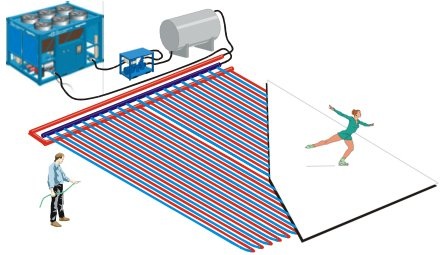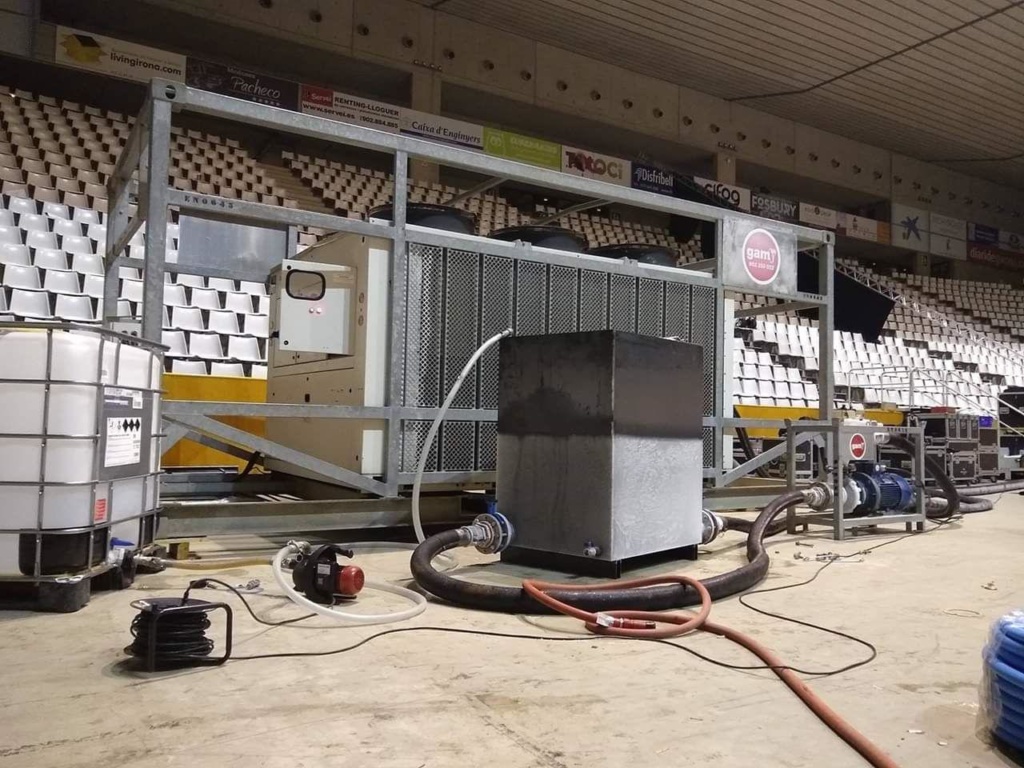Synthetic ice is the latest development in the field of ice coverings. But in spite of the novelty, it already has almost replaced the artificial ice. For example, in training process in the summer in hot countries.
When the circus on ice was born in 1964 in a circus on Tsvetnoy Boulevard, the usual arena was replaced for a time by the ice for the sake of this. In the program of 2010 “Circus on Ice: The New Version” the place of ice was occupied by plastic coating. The so-called synthetic ice. And there are several reasons for this.
Artificial ice
For a relatively short history of existence, the circus on ice has conquered hundreds of ice arenas around the world. Most of ice was artificial. More precisely, the ice was quite natural, but the way of its formation was artificial.
The so-called artificial ice is frozen by means of chillers on tubes or mats, through which the cooling liquid flows.

It is easy to get confused in terms of “artificial” and “synthetic” in the beginning, they are usually not called this way. We say: ice and plastic.
Such ice-machines weigh up to 10 tons. Their installation and commissioning take not less than a day. After which the ice is frozing to the required thickness for about another week.

Difficulties are not limited to transportation and installation. Such refrigerating systems are not very reliable. They consume a lot of electricity, and in hot weather the result of their work is not guaranteed. Care for the ice surface requires the availability of special equipment and personnel. As well as time. For ice show like ours the ice should be cleaned and smoothed at least once per hour. That is 2 times per show.

Synthetic ice
Synthetic ice consists of interlocked polymer panels. Swiss Glice®, which we use in our work, does not have excessive surface requirements. The platform of 12×12 meters is stacked in 3 piles of 1×2 meters and weighs less than 4 tons overall.

These characteristics allow us to work not only in circuses and concert venues. But also in theaters, exhibition complexes, and open spaces. Plastic panels are not afraid of low or high temperatures. It is easy to take care of them. Installation of all our equipment and preparation of the show take less than 3 hours.
At one time the purchase of synthetic ice significantly expanded the geography of our trips. Tens of thousands of spectators around the world have already seen a circus on ice live thanks to it. But it also has cons, which can not be ignored. The manufacturer says that his product has 90% of the glide of real ice. Which is probably true. However, the 10% difference for slip is noticeable.
It is interesting that the first synthetic rink appeared 30 years earlier than the artificial rink in 1844 and was covered with lard (pork fat and salts).
Working on a synthetic ice takes much more energy. And most of artist would prefer to work on the ice. Blades of skates on plastic are used the same way as on ice, but they are blunted much faster. Plastic does not forgive mistakes. In order to keep the balance on it, the technique of sliding must be flawless. That is why such surfaces are often used for practicing only.
Despite all the difficulties, on plastic or on ice artists of the Moscow Circus on Ice show remarkable dynamics and give unforgettable emotions to their viewers.
Always.


